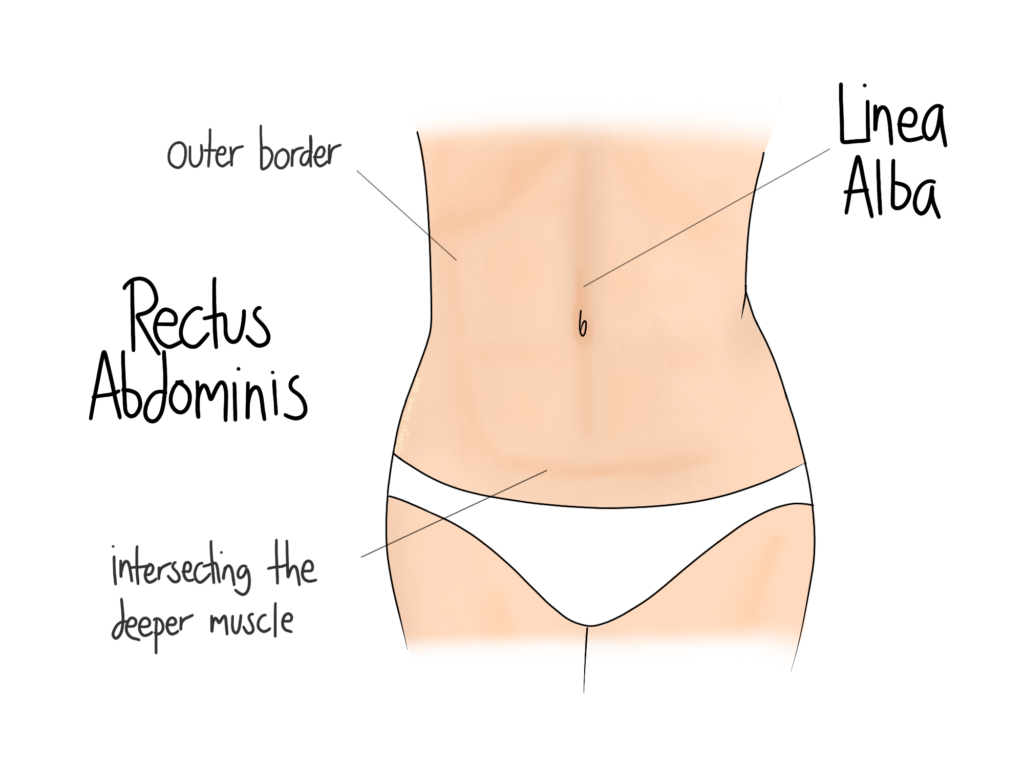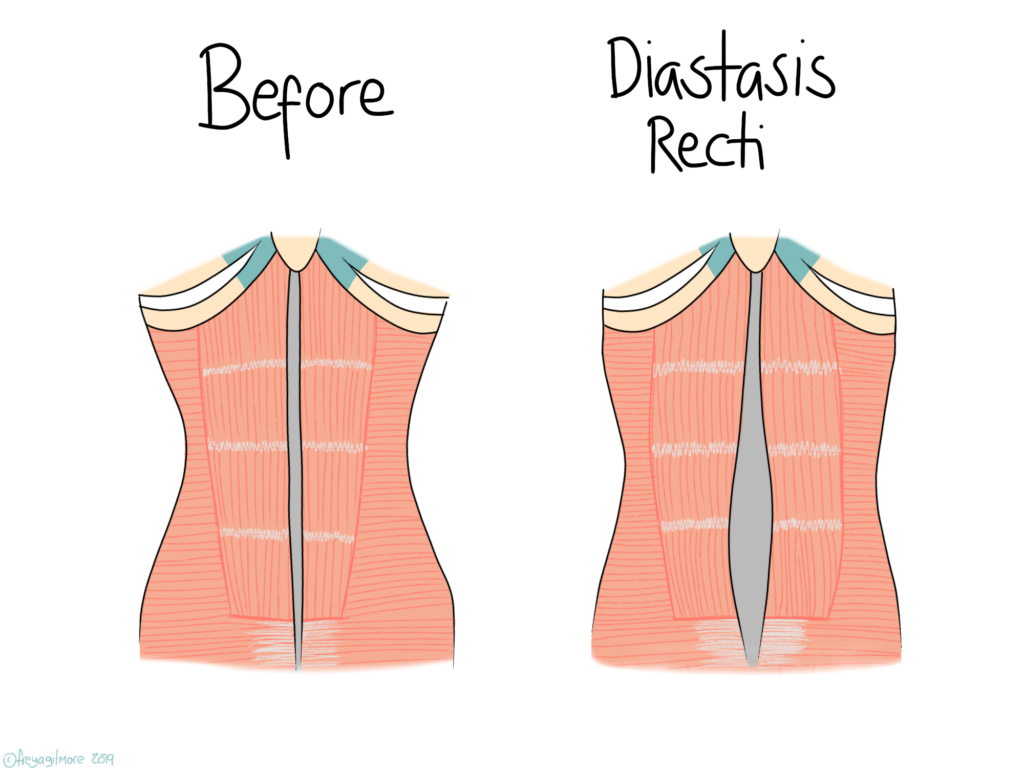In almost every full-term pregnancy, the muscles of the abdomen will need to separate to make room for the growing bump. As you recover after birth, they should come back together, but if there is a significant gap more than 6 weeks later (as is the case for around 60% of people), you might have diastasis recti.
Diastasis recti (or DRA: diastasis rectus abdominis) is a separation of the “6-pack muscles”: rectus abdominis. Its diagnosis is a bit of a grey area, as there is no official criteria for how wide or deep the separation should be, or even at which point in the healing process it is appropriate to diagnose it. Although it affects almost all full term pregnancies, it is not limited to pregnancy, and can occur due to obesity or, rarely, another abdominal mass.

Diagnosis Diastasis Recti (DRA)
Beverley can quickly and easily test for DRA in clinic. She will ask you to lay on your back with your knees bent and tummy exposed. She will then feel along the centre of your abdomen and ask you to raise your head gently. By engaging the muscles, any separation will be highlighted, allowing Beverley to feel its width, length, and depth.
As stated above, there is no consensus on the earliest appropriate point to diagnose post-partum DRA. The six week window after birth allows a lot of healing to take place, but as some mothers are still experiencing lochia at this stage, there is evidence that not all wounds will have completely healed. It may be more sensible to test at around the six week mark, with an intention to repeat the test further down the line to allow for further healing. On the other end of the spectrum, it is never too late to diagnose DRA. Post-partum does not have an expiry date!

Location of Separation
It is the linea alba that stretches to make room for the bump, which is a piece of tissue running from the bottom of the sternum to the top of the pelvis. Therefore, a separation could occur anywhere along it. Typically, the separation would be somewhere near the belly button, as this is where the bump tends to sit.
Managing Diastasis Recti
Whether you’ve just given birth or the diastasis has been present for years, exercise is the most effective management plan. Although the stretched tissue itself is not muscle, and cannot voluntarily contract, strengthening the affected abdominal muscles has been shown to improve the size of diastases. Evidence for specific programs is weak, so as Osteopaths, we are more focused on finding a routine that suits you personally. A suitable exercise routine will likely avoid high-pressure exercises like crunches and sit-ups to begin with, as these can be counterproductive in the early stages. As the muscles strengthen, we can move towards more powerful exercises like these. Beverley can support you through this development.
There are mixed theories as to whether or not diastasis recti is associated with lower back pain or pelvic floor issues. Whether you make an appointment with Beverley for back pain or DRA, she will take a detailed case history to pick up on other factors that may be relevant to your case.
Click here to make an appointment for your diastasis with Beverley Palmer.
